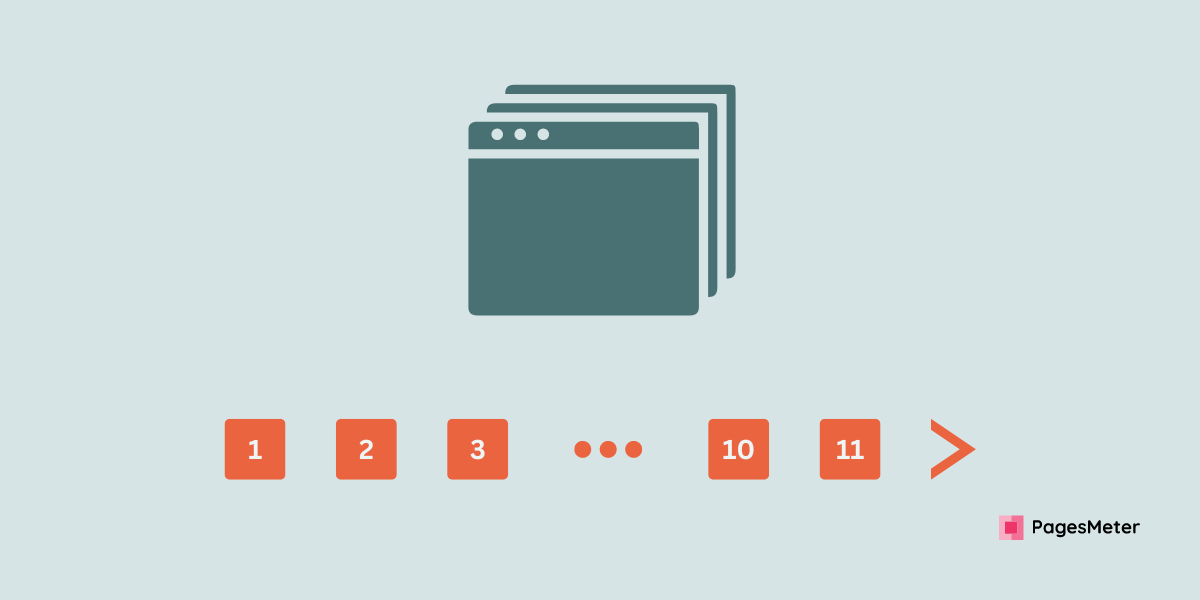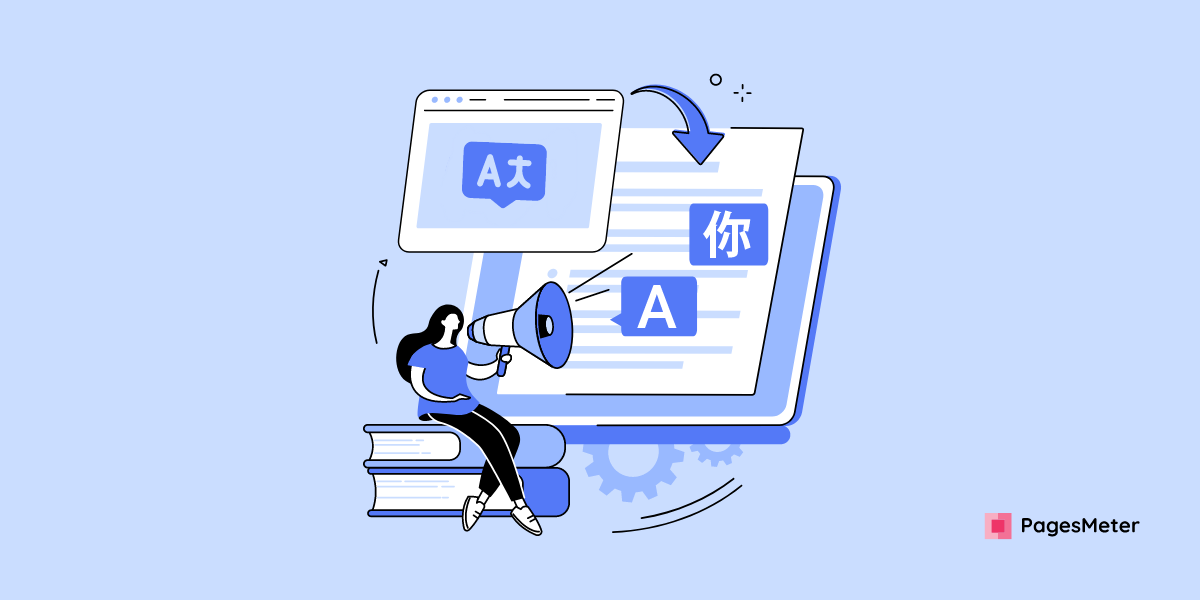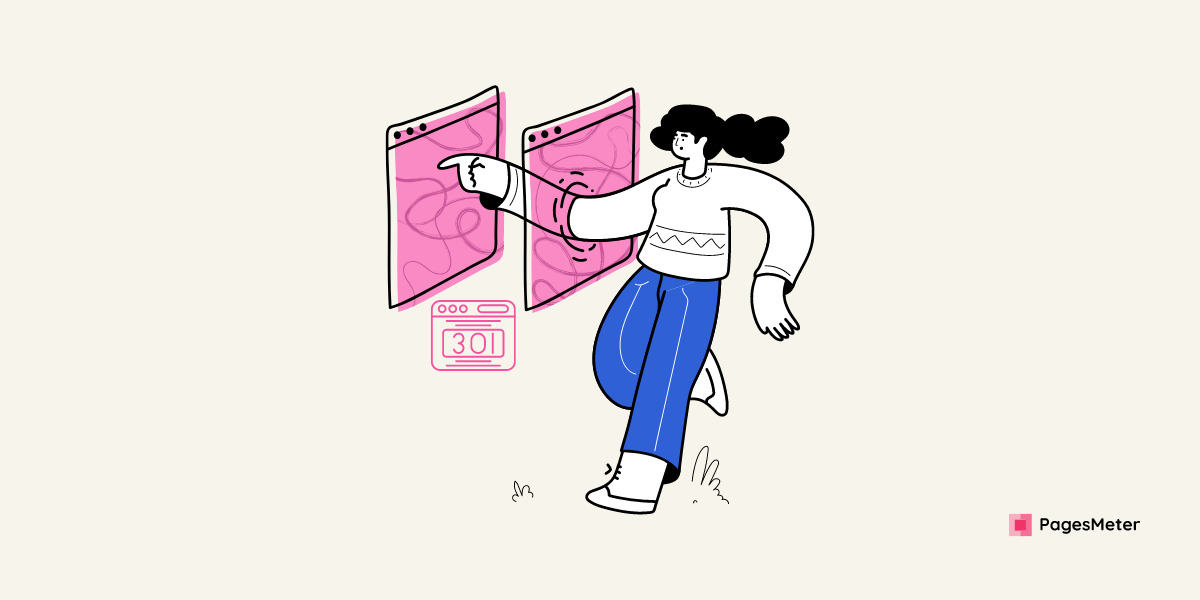- Home /
- Academy /
- Technical SEO /
- Pagination attributes - link rel=” next” and rel=” prev”- Beginners Guide
Pagination attributes - link rel=” next” and rel=” prev”- Beginners Guide

When dealing with large online stores, pagination on category pages can become extremely problematic for search engines. Your internal linking structure is terrible, indexing of deep page products is difficult, and the anchor text values that pagination sends have nothing to do with the content of the page, but there was no other way to do it. It was a choice between SEO and usability.
The most important thing to remember is that in terms of link attribution, Google will treat all pages within the pagination that have rel="next" and rel="prev" implemented as a single unit. This eliminates the need to worry about dispersing internal link juice to paginated pages or external link juice that enters these pages. They will treat them as a group and gather link juice from all of them, while pushing the most relevant page to the top of the search results (most often the 1st page of the paginated unit). The following blog will explain you in detail about the topic.
What is Pagination?
Pagination is a technique for dividing content into multiple pages. It is a popular and widely used website technique for organising long lists of editorials or products. Pagination is most commonly found on the following websites:
- Forums
- Blogs
- eCommerce
- Publishers of news
The most serious issue with search pagination is that information is spread across multiple pages rather than being loaded on a single page. This issue was previously solved by using rel="next" and rel="prev," but Google recently confirmed that this link component is no longer used as an indexing signal.
The pagination attributes rel="next" and rel="prev" are used to show search engines the relationship between element URLs in a paginated series. They aid in the consolidation of indexing properties in the sequence and direct users to the series' most relevant URL.
They are commonly used on eCommerce web pages that feature many products spread across multiple URLs, articles that have been broken down into shorter pieces, or forum threads, to name a few examples. We recommend avoiding passing information across multiple pages whenever possible. With good UX design, even lengthy information can be made understandable and navigable. Google announced these features in September 2011 to assist with the problem of duplicate content. The Rel=Prev and Rel=Next tags are added to the HTML code of a website to inform search engines that a specific set of sequential web pages should be indexed together.
While pagination attributes are a quantifiable concept, they are frequently used incorrectly on websites. On March 21, 2019, Google officially confirmed that they had not used rel="next" and rel="prev" in indexing for a long time; however, other web pages, such as Bing (which also powers Yahoo), continue to use it as a glimpse for exploration and comprehension site map.
When do you need to use the pagination?
Rel=Prev and Rel=Next are required for information that cannot be fit onto a single page without the page scrolling far below the fold. At the bottom of each page, there is a 'previous' or 'next' button. This will take you to the next or previous page of the article. Google will have a much more difficult time sorting the pages if you do not use these features. Google may also assume that the information is not paginated and treat it as duplicates of the same subject.

Category pages on eCommerce websites are a common application for pagination features. Typically, categorization pages contain multiple products and are thus divided into multiple pages, each displaying a subset of the category. The disadvantage is that these pages appear to be very similar to one another, resulting in duplicate content. You give search engines scope and avoid redundant data by using pagination attributes to make the relationships between multiple pages clear to search results.
What are the benefits of pagination?
Improved User Experience:
When there is too much information on a single page, the website visitor may become overwhelmed. By using pagination, website owners can present a large amount of data in small, bite-sized chunks. The product image and price, for example, will be displayed on the home page of an e-commerce site. If a user wishes to learn more about a product or service, they can do so by clicking on an image/price/link with a call-to-action option. Pagination also makes it easier for users to find the information they are looking for.
Enhances Content Quality
All pagination pages are treated the same by Google. Because web developers are tasked with improving the efficiency of content on all web pages, reusing the same content to save time is not an option. First and foremost, pagination should improve the user experience, and the information should be relevant to the viewer's search terms. Each web page does not need to have its own text content. Duplicates are easily removed. You can use third-party services to compare the pagination pages.
Streamlined navigation
A CTA is the pagination example in our previous example, impact on YouTube. It can help someone who wants to go through all of the information and navigate more easily.
Even when no CTAs are present, pagination aids in browsing. It is natural for a user to want to see more results when they reach the end of a page or have seen multiple items in a specific category. When numbering is used, the visitor can select how many additional pages they want to view. It also indicates the size of the data set. A large data set may entice a user looking for variety. It should be noted that using CTAs is always recommended. The accumulated pagination data can then be analysed in columns to ensure that the execution was successful. You can filter the results using the following criteria:
It is paginated - the URL has rel="next" and/or rel="prev" attributes. This indicates that it is included in the paginated sequence. The URL for the first page only has the rel = "next" attribute. This indicates that it is the first page of a paginated sequence. It's a good idea to look up these URLs to ensure they work properly on the series' main page. 2+ pages paginated - URL has rel = "prev" attribute. This indicates that this is the paginated page of the series, not the first page. Again, if you scroll through all of these URLs, this filter will only display the paginated pages.
The URL embedded in the page's rel = "next" or rel = "prev" attribute is not recognised as a hyperlink to the HTML anchor component of the page itself. In keeping with the integration, you should use links to navigate to paginated pages so that users can click the next page to explore. PageRank will move between web pages in the series as Google moves between them.
Non-200 pagination URLs - URLs with rel = "next" and rel = "prev" attributes will return 200'OK' Examples include URLs blocked by robots.txt, no response, 3XX (redirect), 4XX (client error), and 5XX (server error). URLs other than 200 will be treated as errors and ignored in search results because pagination URLs must be fully functional and indexable. Non-200 pagination URLs can be exported in bulk using Report> Pagination> Non-200 Pagination URL Export.
Unlinked pagination URLs - URLs with the rel attributes rel = "next" and rel = "prev" are not assigned anywhere on the website. The pagination feature, unlike traditional anchor components, may not go through PageRank. This could indicate that there is an issue with the URL embedded in the link building or pagination feature. The Report> Pagination> Unlinked Pagination URL export can be used to outsource unlinked pagination URLs in bulk.
The paginated URL cannot be indexed because it is non-indexable. Only if a 'view-all' page is specified, or if there are additional factors on pagination URLs that require canonicalization to a single URL, should they be indexable. Canonicalizing paginated pages on page 2+ to the first page of a sequence is a common error. Because the component pages do not contain redundant data, Google advises against using this method. Another common mistake is the use of 'noindex,' which means Google removes paginated URLs from the index and prevents following outlinks from those web pages, which can be problematic for the goods on those pages. This filter will assist in identifying common configuration issues.
Multiple Pagination URLs - The page contains multiple rel="next" and rel="prev" attributes (when only one rel="next" or rel="prev" attribute should exist). This could imply that search engines ignore them. Pagination Loop - Displays URLs with rel="next" and rel="prev" attributes that loop back to a previous URL. Again, this could imply that the search results simply ignore the pagination series displayed. Sequence Error - Shows URLs with an error in the sequence of the rel="next" and rel="prev" HTML link elements. This standard procedure ensures that URLs contained within HTML link elements with rel="next" and rel="prev" reciprocate and verify their sequence connection.
Implementations of appropriate pagination
The vast majority of rel=prev/next configurations have made use of self-referencing canonical tags. Change nothing about this configuration. Consider the pages in the same way you would any other indexable page on the website, and make sure to include internal links to other pages in the pagination series. You can also canonicalize paginated pages by directing them to a view-all page that displays all of the data. In this manner, the content can still be divided into separate pages for customers, but the searchable version will include all of the subject matter.

Some suggestions for category optimization: What can you do to improve the performance of your category pages now that rel=prev/next has been removed? Here are a few recommendations:
- First, make sure that the majority of your content is on the classification's first page. This will aid in indexing. Content includes text, images, and videos.

- Not only that, but it will aid in indexing for relevant search queries. Once on your category page, visitors can navigate to other pages.

- Next, optimise your featured image on your primary category page. A thumbnail with a search term in the file name and alt text is possible. This provides additional information to Google about the nature and location of your pages.

Additionally, optimised images will drive traffic from Google Image Search. This one can be tricky in some cases. What if a specific category has 10,000 items? Check to see if you can truly divide them into subcategories.Then, on the category page, include a representative from each specific category. In e-commerce, each classification can have between 30 and 60 products. However, you should not create a sub-group unless you have five distinct goods.ry.

How could SEO professionals have known rel=prev / next didn’t work?
When Google confirmed that they hadn't supported rel=prev/next in years, one of the first questions from SEO professionals was, "How did technical SEOs not know this?"
The simple answer is that there was no way to know. We would not have known if Google had not notified us.
Google would combine commands for the set of pages if the pagination worked. Although they would typically display the first page in the series, they would also switch which page was displayed if the search terms contained a more meaningful page from the set. If the pagination didn't work, Google would do the same thing—it would display the most relevant page for the query.
Should SEO’s get rid of rel=prev / next?
If you've already used rel=prev/next on your website, don't remove it. Google was not the only one who made use of this information. W3C still recommends and uses it for user experience and ADA compliance. Some web browsers also use it for caching. Other search engines, such as Bing, are still using the markup.
Conclusion
Allow it to be if you've already used rel=prev/next for pagination. It's pointless to change it, and you'll probably end up doing more harm than good.
If you want to change the pagination even if you believe the paginated pages are of poor quality or do not provide enough value, consider grouping the pages in a way that benefits individuals while also providing an alternate crawl path for browsers. For example, if you wanted to group a large number of blog posts using classifications, that would likely be more effective for users than a slew of paginated pages containing posts on a variety of topics.
These category pages, which contain posts on a single topic, may appear in the SERPs for specific terms related to the classification.
Start using PagesMeter now!
With PagesMeter, you have everything you need for better website speed monitoring, all in one place.
- Free Sign Up
- No credit card required

The hreflang attribute is used to specify which language your content is in and which geographical region it is intended for.

A search engine spider has a "allowance" for how many pages on your site it can and wants to crawl. This is referred to as a "crawl budget."

The URL redirect also known as URL forwarding is a technique to give more than one URL address to a page or as a whole website or an application.
Uncover your website’s SEO potential.
PagesMeter is a single tool that offers everything you need to monitor your website's speed.